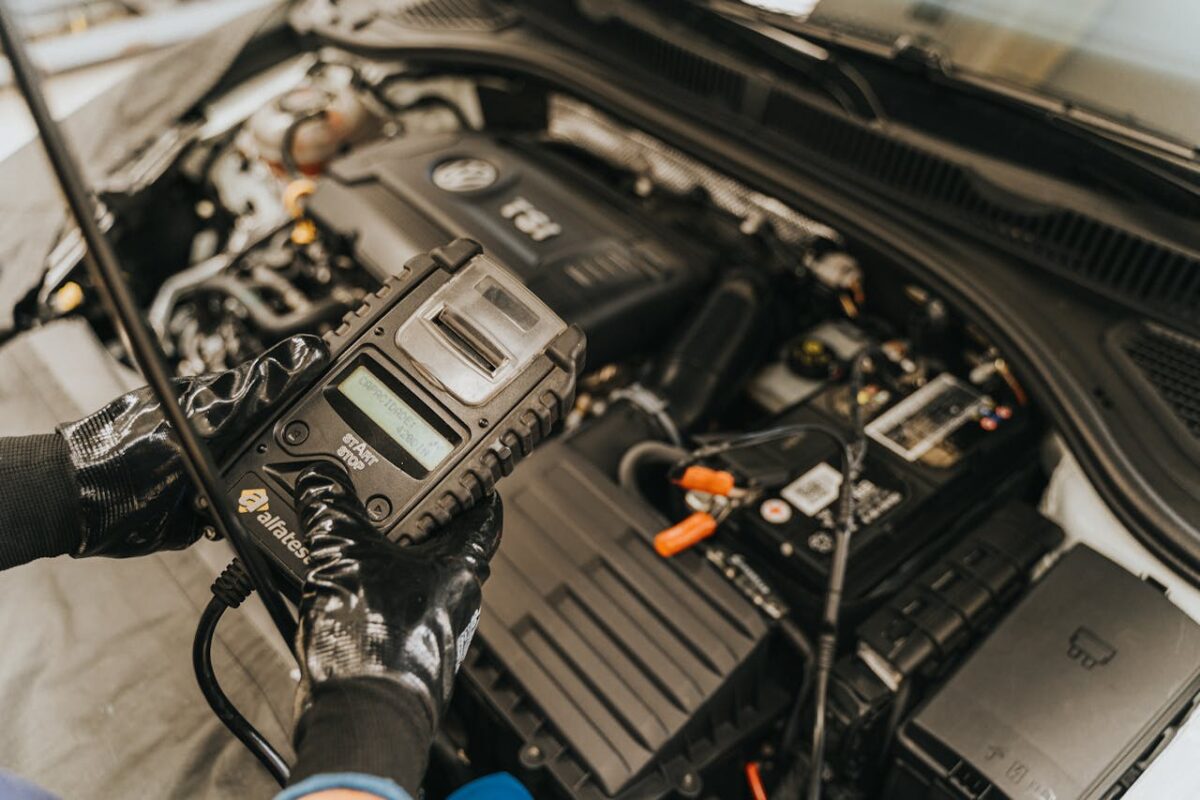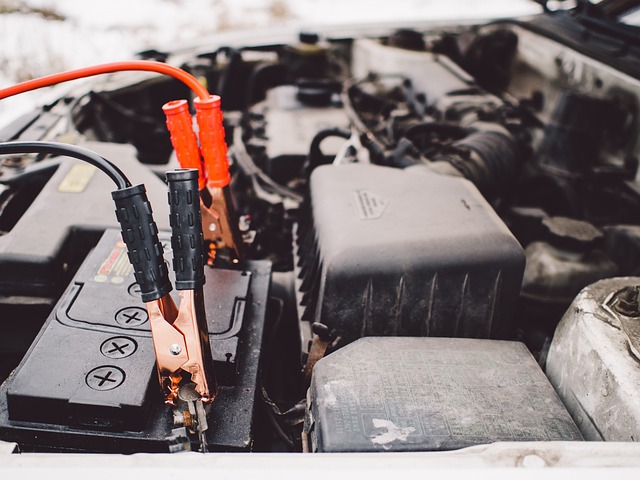Finding your car with a dead battery in the morning can be incredibly frustrating, especially when you’re running late for work or have important appointments. This article explores the common culprits behind overnight battery drain and provides practical solutions to prevent this issue from recurring.
Common Causes of Overnight Battery Drain
Parasitic Draw from Electrical Components
Parasitic draw occurs when electrical components continue consuming power after the vehicle is switched off. Modern vehicles have numerous electronic systems that require small amounts of power to maintain memory settings, security systems, and computer modules. However, when these systems malfunction or draw excessive current, they can completely drain your car battery within hours. A healthy vehicle should have a parasitic draw of less than 50 milliamps, but faulty components can increase this draw to several hundred milliamps or more.
Common sources of excessive parasitic draw include malfunctioning alternators with faulty diodes, stuck relays that keep circuits active, and aftermarket accessories that haven’t been properly installed. Even something as simple as a boot light that doesn’t switch off properly can drain your battery completely overnight. In Auckland’s humid climate, corroded connections can also create resistance that leads to increased current draw, accelerating battery drain.
Interior and Exterior Lights Left On
One of the most straightforward causes of overnight battery drain is accidentally leaving lights on. While most modern vehicles have automatic shut-off features for headlights, older models common on Auckland roads may not have this technology. Interior lights, boot lights, and glove box lights are particularly easy to overlook, especially if they’re not immediately visible when exiting the vehicle.
Map lights and vanity mirror lights are frequent culprits, as they can be accidentally activated and go unnoticed when leaving the vehicle. Door lights that don’t properly switch off due to faulty door switches or misaligned doors can also drain your battery. In some cases, the light itself might appear to be off, but a faulty switch keeps the circuit active, continuing to draw power throughout the night.
Faulty Alternator or Voltage Regulator
Your alternator serves two critical functions: charging the battery while driving and powering the vehicle’s electrical systems when the engine is running. When an alternator begins to fail, it may not fully charge the battery during your daily commute, leaving it partially depleted. Over successive days, this incomplete charging cycle results in a battery that appears to drain overnight but has actually been slowly losing charge over time.
A failing voltage regulator, which controls the alternator’s output, can cause similar problems. If the regulator allows the alternator to overcharge, it can damage the battery’s internal structure, reducing its capacity to hold charge. Conversely, if it undercharges, the battery never reaches full capacity. Both scenarios can manifest as overnight battery drain, though the root cause lies in the charging system rather than actual power consumption while parked.
Extreme Temperature Effects
Auckland’s variable climate, with its cool winters and humid conditions, can significantly impact battery performance. Cold temperatures reduce a battery’s chemical reaction rate, decreasing its ability to deliver power. At 0°C, a battery can lose up to 35% of its strength, and if it’s already partially discharged, this reduction can be enough to prevent starting in the morning.
High temperatures during summer can be equally damaging, accelerating the chemical reactions inside the battery and causing internal components to deteriorate faster. This deterioration reduces the battery’s overall capacity and its ability to hold charge overnight. Temperature fluctuations between day and night can also cause expansion and contraction of battery components, potentially creating internal shorts that drain power.
How to Diagnose Battery Drain Issues
Performing a Parasitic Draw Test
To identify parasitic draw, you’ll need a digital multimeter capable of measuring current. Start by ensuring all doors are closed, lights are off, and the key is removed from the ignition. Disconnect the negative battery terminal and connect your multimeter in series between the negative battery post and the negative cable. Set the multimeter to measure DC amps and observe the reading.
Allow the vehicle to enter sleep mode, which typically takes 20-30 minutes for modern vehicles with complex electronic systems. During this time, the initial draw may be higher as modules shut down sequentially. Once stabilised, the reading should be below 50 milliamps for most vehicles. If it’s higher, you’ll need to systematically remove fuses one at a time while monitoring the meter to identify which circuit is causing the excessive draw.
Document your findings carefully, noting which fuse corresponds to which system. This information will be invaluable when seeking professional help or attempting repairs yourself. Remember that some vehicles have multiple fuse boxes, including ones under the bonnet, in the cabin, and sometimes in the boot area.
Testing Battery Health and Capacity
Before assuming you have a drain issue, it’s essential to verify your battery’s health. A battery that’s reached the end of its service life may simply be unable to hold charge properly. Most auto parts stores in Auckland offer free battery testing services, or you can perform basic tests yourself with a multimeter.
A fully charged battery should read approximately 12.6 volts when the engine is off. If the voltage is below 12.4 volts, the battery is less than 75% charged. Start the engine and check the voltage again; it should read between 13.7 and 14.7 volts, indicating the alternator is charging properly. If these readings are outside normal ranges, you may have a charging system problem rather than a drain issue.
Load testing provides a more accurate assessment of battery health. This involves applying a load equal to half the battery’s cold cranking amp rating for 15 seconds while monitoring voltage. If the voltage drops below 9.6 volts during this test, the battery likely needs replacement. Professional auto electricians have specialised equipment that can perform more comprehensive battery analysis, including internal resistance testing and cell balance checks.
Solutions and Prevention Strategies
Immediate Fixes for Common Problems
Start with the simplest solutions first. Develop a routine of checking all lights before leaving your vehicle, including interior lights, boot lights, and any aftermarket lighting you’ve installed. Consider installing LED bulbs in frequently used interior lights, as they draw significantly less current than traditional incandescent bulbs, reducing the impact if accidentally left on.
Clean your battery terminals regularly using a mixture of baking soda and water to neutralise acid buildup, followed by a thorough rinse with clean water. Apply a thin layer of petroleum jelly or specialised terminal protector spray to prevent future corrosion. Ensure battery cables are tight and secure, as loose connections can cause intermittent charging problems that mimic battery drain issues.
If you’ve recently had aftermarket equipment installed, such as a stereo system, alarm, or dash cam, verify the installation was done correctly. Improper wiring or components that don’t enter sleep mode properly are common causes of battery drain in Auckland vehicles. Some aftermarket devices may need to be connected through ignition-controlled circuits rather than constant power sources.
Long-term Maintenance Practices
Establish a regular battery maintenance schedule appropriate for Auckland’s climate conditions. Test your battery every six months, particularly before winter and summer when temperature extremes place additional stress on the battery. Most batteries in Auckland last between three to five years, but this can vary based on driving habits and maintenance practices.
Consider investing in a battery tender or trickle charger if your vehicle sits unused for extended periods. These devices maintain optimal charge levels without overcharging, significantly extending battery life. For vehicles used infrequently, starting and running the engine for at least 20 minutes weekly helps maintain battery charge and prevents fuel system issues.
Keep track of your battery’s age and performance history. Mark the installation date on the battery with a permanent marker, and maintain a log of any charging issues or jump-starts required. This information helps identify patterns and predict when replacement might be necessary, preventing unexpected failures.
When to Seek Professional Help
While many battery drain issues can be diagnosed with basic tools, some problems require professional expertise and specialised equipment. If parasitic draw testing reveals excessive current consumption but you cannot identify the source, a professional auto electrician has the diagnostic tools and experience to trace complex electrical faults efficiently.
Modern vehicles with sophisticated electronic systems, particularly European models common in Auckland, often require computer diagnostics to identify module-related issues causing battery drain. Faulty body control modules, malfunctioning comfort control systems, or software glitches may not be apparent through traditional testing methods. Professional technicians have access to manufacturer-specific diagnostic tools and technical bulletins addressing known issues.
If you notice recurring battery problems despite replacing the battery, or if electrical issues accompany the drain such as flickering lights, non-functioning accessories, or warning lights on the dashboard, these symptoms indicate more complex electrical system problems requiring professional attention.
Need Help With Your Car Battery Issues?
Dealing with overnight battery drain can be frustrating, but identifying and fixing the root cause will save you time, money, and stress in the long run. Whether it’s a simple case of parasitic draw or a more complex electrical issue, addressing the problem promptly prevents being stranded with a dead battery.
As experienced auto electricians in Auckland, Eurosparx can diagnose and repair all types of battery drain issues, from simple parasitic draws to complex electrical system faults. Contact our team today by calling 09 218 7789 to schedule a comprehensive electrical system inspection and get your battery problems sorted once and for all.






 The first and biggest reason is that you will never know exactly how good the used battery is. There are some tests that can be done to give you a general idea, but many times these tests can say a battery is good when it isn’t. Even if the test was right, you don’t know how much longer the battery will last.
The first and biggest reason is that you will never know exactly how good the used battery is. There are some tests that can be done to give you a general idea, but many times these tests can say a battery is good when it isn’t. Even if the test was right, you don’t know how much longer the battery will last.